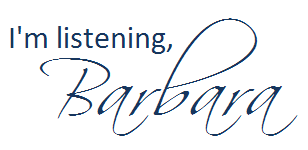In Monday’s PRCA 4330 (PR Research) class, we are discussing using secondary and historical research. Purdue University’s Mihaela Vorvoreanu helps simplify this process in a recent post on her PRConnections blog.With her permission, I adapted her blog post to a PPT. If you download the PPT, you can see the relevant sections of her blog post in the Notes area.
The Joshua Tree Epiphany & CRAP :: Principles of Effective Design
In Friday’s PRCA 3339 (PR Publications) course, we discussed author Robin Williams‘ concept of the Joshua Tree Epiphany and how CRAP can help us remember effective design principles.
Many thanks to Saul Greenberg for developing the original PPT that I based this upon.
PRCA 3711/4711 Trade Book Review Assignment
 For my PRCA 3711/4711 Students:
For my PRCA 3711/4711 Students:
One of our assignments this semester is for you to read and review a trade book on public relations. In the left sidebar of this blog is a list of books for you to choose from. (You can also see this complete list at my Amazon.com Public Relations Trade Books page that I created for you.)
Your book review will take the form of a 5-minute presentation in class. For your presentation, create a professional-looking PowerPoint presentation. Rely more on images to tell your story than bullet points. (We’ll discuss more in class about how not to create a “Death by PowerPoint” slidedeck.)
Your presentation should include:
- Opening slide should include an image of the book’s cover
- Short bio of the author(s) of the book (perhaps with a photo of the author)
- What did you learn by reading this book?
- What surprised you in this book?
- What do you want to learn more about, now that this book has piqued your interest?
- Would you recommend other students to also read this book? Why or why not?
Once you choose the book, reply with a comment to this blog post so that you can “claim” the book for yourself; unless you are working in pairs, only one student should review each book on the list. (If you work in pairs, both individuals will earn the same grade on the assignment.)
Optional:
- If you have a blog (and if not, why not?), please consider uploading your book review to SlideShare and embedding the slides in your blog.
- If you’re using Twitter, search for the authors of your book there and connect with them. You may be surprised how willing most of them are to reply to you when you @ them.
- Leave a comment about your thoughts on the book on the author’s blog.
Questions about this assignment?

What is research: Initial thoughts from PRCA 4330
In today’s PR Research class, we discussed the students’ perceptions of what research is. I captured the essence of their thoughts (meaning I typed *most* of what I heard them say) and made a word cloud of it using Wordle. The words they said most frequently showed up larger, as in most word clouds.
At the end of the semester, we’ll check back and see if their thoughts about research have changed.
Does research really matter?
This semester, I am teaching PR Research (PRCA 4330 at Georgia Southern University) for the first time. Here’s a short video from Phil Gomes from Edelman Digital on the importance of research in public relations. (NOTE: You must be a member of PROpenMic to view this video clip. Registration is easy and free.)
Find more videos like this on PROpenMic
PRCA 4330 Article Review
For my PRCA 4330 Public Relations Research class:
Review an academic article on public relations that appears in a peer-reviewed journal. Your review is due by midnight on Tuesday, September 1. Recommended journals include (but aren’t limited to):
- Journal of Public Relations Research (via EBSCOhost in GALILEO)
- Public Relations Journal
- Public Relations Quarterly (via EBSCOhost in GALILEO)
- Public Relations Review (hard-copy only, at Zach Henderson Library)
Choose the article you will review by August 26 at class time, and reply with a comment to this blog post with your article choice. Use APA works cited style to tell me which article you will review.
Your 500-word minimum review could take the following form:
- What did you learn from reading the article?
- What surprised you in the article?
- What do you want to know more about, now that you’ve read the article?
It is acceptable to use first person for this review. Be sure to cite your source–in text as well as in your reference section–in proper APA format. (Using Citation Machine might be helpful.) This assignment is worth 100 of your 1000 points in PRCA 4330.
Turn this assignment in using GeorgiaVIEW by midnight on Tuesday, September 1. No hard copy is needed.
UPDATE: On her PRConnections blog, Purdue University’s Dr. Mihaela Vorvoreanu shares her tips for how to read a research article. This is a MUST read. See the PPT version of her blog post here at Public Relations Matters, also.
Questions? You know where to find me . . .
Photo Credit: http://www.flickr.com/photos/santos/1704875109/
I Signed Up for WordPress :: What Next?
For my PRCA 3339 PR Publications class:
So, you signed up for an account at WordPress, and you added an About page. Now what’s next?
FIRST: Let me know your blog address by replying to this post with a comment, sharing your name and blog address.
NEXT: How do you go about learning more to create a blog that reflects your personality and style?
Fortunately, WordPress offers many FAQ screencasts to help you with the step-by-step instructions. Here are a few of the best ones to help you get started on the right foot:
- What should I do first?
- General settings
- Where’s my dashboard (and what’s it for)?
- Writing & publishing your posts
- and dozens more
And though you may have a good handle on the technical aspects of blogging, remember that the technical side is only part of the blogging equation. Corinne Weisgerber, a professor at St. Edward’s University and fellow PROpenMic member, created this presentation for her Social Media for PR class. The emphasis? How blogging can help you create your personal brand online. Take a look. It’s worth the time.
PRCA 3339 Blogging Guidelines
 In our PRCA 3339 (Public Relations Publications) course this fall, blogs are now a part of our curriculum. Below you will discover what components will make up your blog:
In our PRCA 3339 (Public Relations Publications) course this fall, blogs are now a part of our curriculum. Below you will discover what components will make up your blog:
Your “About” Page
- Write a short bio and post it on your blog’s About page (see some great tips)
- Due: September 11, before class
Blog Post #1 :: CRAP: Contrast, Repetition, Alignment, Proximity
- Pick any one of these four elements of good design. Define it, and explain its importance to good design. Remember to give credit to Robin Williams (the writer and graphic designer, not the comedian).
- Due: September 14, before class
Blog Post #2 :: Segmenting Publics
- Thinking about your client for your brochure, how would you segment the client’s publics? How will your brochure design be impacted by how the publics are segmented?
- Due: September 21, before class
Blog Post #3 :: Typography
- What factors go into a designer’s decision of which typefaces (fonts) to use? What sizes are considered best for business cards? For brochures? Where can beginning designers go to find legal, free fonts to use? Also, post a link to directions (written by someone else) for installing a font.
- Due: September 28, before class
Blog Post #4 :: Photography
- After completing the Poynter NewsU course “The Language of the Image,” respond to the following:
- What did you learn?
- What surprised you?
- What do you want to know more about?
- Due: October 26, before class
Four Additional Blog Posts
- Write four additional blog posts about topics related to the content of PRCA 3339. We’ll discuss potential topics in class.
Final Blog Post :: Top Ten List
- Using PowerPoint and SlideShare, post the top ten things you learned about public relations publications this semester. (More details will be shared on this post as we near the end of the semester.)
- NOTE: This blog post will be graded separately from the rest of your blog. It will count in with your participation points. This blog post will be worth 50 points, and take the place of your flyer (which we did not create this semester).
- Due: TBA Wednesday, December 2, before classtime.
Each blog post should contain:
- At least 250 words
- Hyperlinks to relevant websites
- The category or tag of Assignment PRCA 3339 (so that I can easily find the posts that you specifically wrote for this class)
- Relevant tags
Blog posts can be written informally and in the first person; that is, they don’t need to sound like a term paper. However, there’s still an expectation for proper grammar, spelling and capitalization. If you have questions about how informal is “too informal,” please let me know.
When I evaluate your blog at the end of the semester, I’ll be looking for:
- professionalism: clear, correct, thoughtful writing
- frequency: sufficient posts
- linking: identify other PR blogs (use PR Open Mic or my blogroll in my Delicious bookmarks as starting points) and link to them. Respond to others’ posts. Become a part of the blogosphere. Blogging should not be lonely.
- readability: brief & concise writing style, use of white space, bold characters, images, bullet points
Questions? Just let me know.
NOTE: Many thanks to Dr. V at Clemson University, who allowed me to use her blogging guidelines from her PRinciples class. They were so well-written that I made just a few tweaks for my own class. Dr. V knows that Blogs Matter.
Photo Credit: http://www.aoddesign.com/blog/resources/xmas-wordpress-logo-icons/
Arrive, Survive and Thrive in Prof. Nixon’s Classes :: Summer 2009
An Open Note to All of Prof. Nixon’s Students at Georgia Southern University:
We’re almost off and running in our Summer Semester classes at GSU. This semester, I’m teaching two classes; the classes, with hyperlinks to the syllabi, are listed below:
So that we can make the most of this semester, please (PLEASE) take some time to read through the blog posts I’ve included here. I promise you, it will be well worth your time. (How often do professors let you get inside their heads, letting you know their tips for success and their pet peeves?)
- Prof. Nixon’s Teaching & Learning Philosophy
- How to Fail a Class (WIthout Really Trying)
- Ten Ways NOT to Prepare for College Advising
- My End of Semester Rant, Kinda
Additionally, here are a few more tips:
- When communicating with me via e-mail (or Facebook), please put your course number (such as PRCA 3339) in the subject line to help me immediately identify who you are and frame your questions or comments. Do your best to write in full sentences, paying attention to standard English grammar and spelling. Always sign your e-mails with your first and last name, as your GSU e-mail address will not make that readily apparent to me.
- When submiting an assignment in GeorgiaVIEW, always put your last name as part of the file name, and also include your name in the document itself. Papers submitted without your last name as part of the file name cannot earn full credit.
- If an assignment is due in GeorgiaVIEW, the only way to get full credit for the assignment is to submit it in GeorgiaVIEW. (E-mailing an assignment to me can be risky; I receive 250+ e-mails a day, and there’s a chance I will not see it in my inbox.)
- Follow me on Twitter, if you really want to get inside my head. (What’s Twitter?)
Let’s make this a great semester together!
Spring 2009 PRCA 2330 Blogroll
Looking for the blogs of my students from Introduction to Public Relations, Spring 2009? I moved the list from a page to this blog post.
- Addison, Lindsay
- Agee, Beth
- Arnwine, Kristen
- Barlow, Nicole
- Bivins, Antonio
- Bowers, Lindsey
- Brewington, Erika
- Burch, Tico
- Callahan, Meghan
- Cameron, Jessica
- Childs, Whitney
- Cook, Matt
- Coonrod, Lindsay
- Crawford, Katie
- Daies, Natalia
- Dietrich, Amy
- Drury, Sara Jane
- Farmer, Sarah
- Floyd, Evan
- Gemmel, Amy
- Greene, Victoria
- Gunnels, Leigh
- Gxashe, Biso
- Hankerson, Meshae
- Henry, Jacqueline
- Herrington, Brittany
- Hinkley, Lauren
- Huger, Brooke
- Hyter, Lynndsey
- Joiner, Trey
- Jones, Carter
- Jurgensen, Justin
- Keith, John
- Kemp, Sarah
- Kicklighter, James
- Kupcewicz, Ally
- Lawhead, Ansley
- Le, An
- Lee, Lauren
- Lindsay, Brittney
- Lintel, Marilyn
- Mardar, Stefanie
- Martin, Ashleigh
- Mauney, Matt
- McCullough, Happy
- Monahan, Sarah
- Mosa, Hozan
- O’Dowd, Whitner
- Odubanjo, Femi
- Olesen, Line
- Pascall, Michelle
- Pilgrim, Justin
- Pittman, Samone
- Pond, Eryn
- Redmond, Kristen Haley
- Renfroe, Ashley
- Robinson, Hillary
- Robinson, Jaylynne
- Roper, Emily
- Runyan, Sean
- Sage, Katrina
- Schlumper, Allie
- Scott, W. Clay
- Sherwin, Casey
- Smathers, Lauren
- Smith, Meghan
- Spillers, Meghan
- Starr, Keenan
- Stratton, Mackenzie
- Sullivan, Sarah Beth
- Taylor, Katelyn
- Thomas, Becca
- Tidmore, Meg
- Turner, Jaren
- Walker, Marie
- Whigham, Kacie
- Wigley, Kenneth
- Williams, Emily
- Wright, Kati Ann
- Zaremba, David





